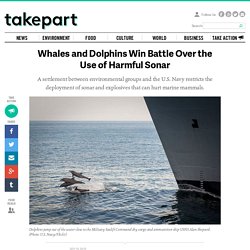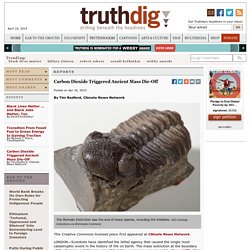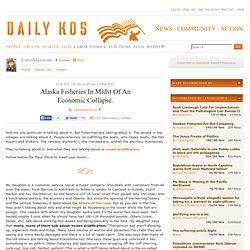

Takepart. The long-running war between the whales and the United States Navy is over.

A federal judge on Monday approved a legal settlement that limits the use of sonar and other underwater explosives that can inadvertently harm whales and dolphins. For marine mammals, the ping of sonar or the muffled blast of underwater detonations can be deafening and even deadly. The settlement ends litigation brought by environmental groups against the Navy over its use of sonar in important feeding grounds for whales off the Southern California coast near Santa Catalina, San Clemente, and San Nicolas islands, as well as waters around Hawaii, including Maui, Molokai, and the Big Island.
“The settlement protects some of the most important areas for marine mammals that are sensitive to sonar,” said Miyoko Sakashita, oceans director for the Center for Biological Diversity, one of several groups involved in the litigation. Carbon Dioxide Triggered Ancient Mass Die-Off. The Permian Extinction saw the end of many species, including the trilobites.

(UCL Geology Collections via Wikimedia Commons) This Creative Commons-licensed piece first appeared at Climate News Network. LONDON—Scientists have identified the lethal agency that caused the single most catastrophic event in the history of life on Earth. The mass extinction at the boundary of the Permian and Triassic eras 252 million years ago was caused by the acidification of the world’s oceans, as a consequence of an increase in atmospheric carbon dioxide.
The Permian Extinction—sometimes called “the Great Dying”—seemed to all but obliterate life in the oceans, and perhaps on land. All life on Earth today has descended from the few survivors of this far-off episode. “This is a worrying finding, considering that we can already see an increase in ocean acidity today that is the result of human carbon emissions” The whole chain of events took 60,000 years. Something Really, Really Terrible Is About to Happen to Our Coral. Coral reefs cover just 0.1 percent of the ocean floor, but provide habitat to 25 percent of sea-dwelling fish species.

That's why coral scientist C. Mark Eakin, who coordinates the National Oceanic and Atmospheric Administration's Coral Reef Watch program, is surprised that the warning he has been sounding since last year (PDF)—that the globe's reefs appear to be on the verge of a mass-scale bleaching event—hasn't drawn more media attention. During the last mass bleaching event, we lost almost a fifth of the world's coral reefs. Only some have recovered. Bleaching happens when coral loses contact with zooxanthellae, an algae that essentially feeds them nutrients in symbiotic exchange for a stable habitat. Before the 1980s, large-scale coral bleaching had never been observed before, Eakin says.
Eakin is concerned about a relapse, because the oceans are relentlessly warming, driven by climate change from ever-increasing greenhouse gas emissions. Which brings us to 2015. Hottest year ever? Giant clam reveals Middle Ages were warmer than today. While government science and media begin the ramp-up to claim 2014 as the “hottest year ever” China’s Sea’s biggest bivalve shows that the Middle Ages were warmer than today, when Carbon Dioxide was lower.

From the Chinese Academy of Sciences: Two recent papers, one is in Earth-Science Reviews and the other is in Chinese Science Bulletin, have studied key chemical contents in micro-drilled giant clams shells and coral samples to demonstrate that in the South China Sea the warm period of the Middle Ages was warmer than the present. The scientists examined surveys of the ratio of strontium to calcium content and heavy oxygen isotopes, both are sensitive recorders of sea surface temperatures past and present. The Roman and Mediaeval Warm Periods both showed up prominently in the western Pacific and East Asia. Sea surface temperatures varied considerably over the 2500-year period. Dr. Like this: Like Loading... Alaska Fisheries In Midst Of An Economic Collapse. My daughter is a customer service rep at a major company.

She deals with customers from all over the state; from Barrow to Ketchikan to Nome to Valdez to Cantwell to Kodiak, Dutch Harbor and ALL the Interior. So she hears a LOT of 'local' news from people who chit-chat; who k'vetch about politics, the economy and Obama.